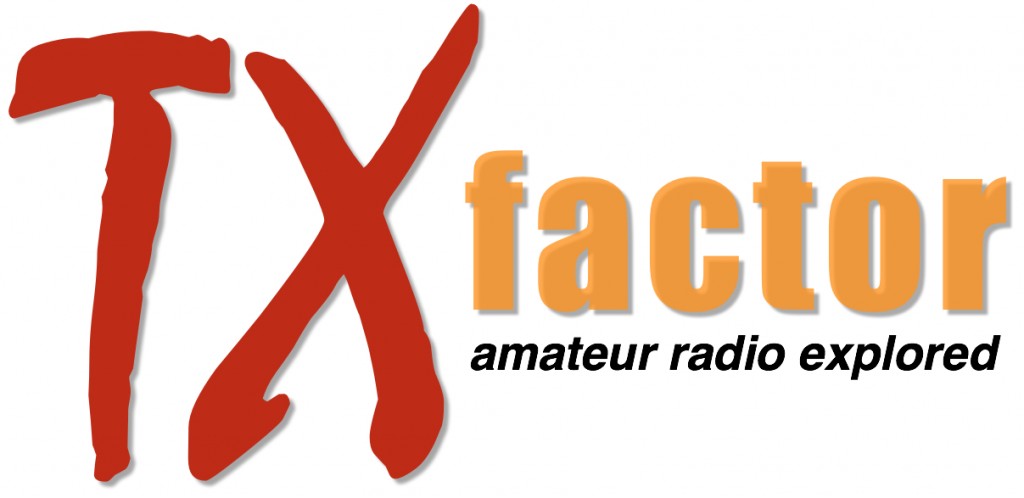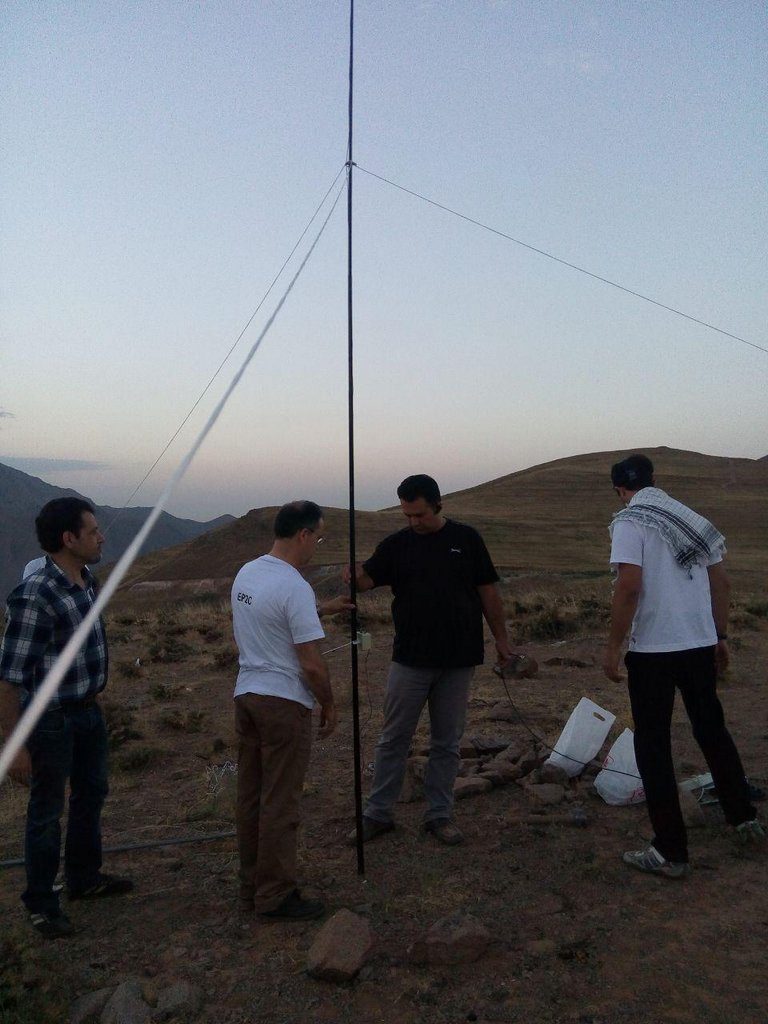Many thanks to SWLing Post contributors Eric (WD8RIF) who notes that TX Factor Episode 12 is now online:
Monthly Archives: July 2016
Photos from an EP2C field event
Many thanks to SWLing Post contributor, Mehdi Asgari, who writes with news from his amateur radio club (EP2C):
We had a one-day [amateur radio] program on July 16, 2016.
Our club organized an activity from 5:00 AM local time to 8:30 PM (local time) in Karaj’s heights (50 km of Tehran).
We had a vertical for 15 and 20m, an Inverted-Vee for 15 and 20m and a Magnetic loop (can be tuned from 10 to 22 MHz).
We operated two bands (mainly 20m and some 15m), both SSB and CW.
Propagation was not very good but we managed some good DX contacts (East of USA: Michigan, New Jersey, Ohio, etc, Japan, Canada, …).
Antennas were made by us and we used two rigs (Icom 735 for CW and Elecraft K3 for SSB).
It was also an educational program for enthusiasts and beginners.Cheers
Mehdi
Thank you so much, Mehdi, for sharing EP2C special event!
I imagine your field station attracted a lot of attention on the DX Clusters and I bet you were on “the other end” of more than one pile-up despite the bad propagation.
Your club also used two great field radios: the benchmark Elecraft K3 and the Icom IC-735. Two radios from two completely different eras! I imagine the age gap between the two was pushing three decades. The IC-735 was my first ham radio transceiver. Though it’s an older rig, it holds its own in the field and has proven itself reliable (the ‘735 also had one of the better general coverage receivers of the era). Of course, the Elecraft K3 has become the DXpeditioner’s choice transceiver due to its performance, versatility and efficiency.
Thanks again for sharing your event with us, Mehdi. I hope to hear EP2C on the air again very soon!
Edward restores a Star-Lite Town & Country FM-820 portable receiver
 Many thanks to SWLing Post contributor, Edward Ganshirt, who writes:
Many thanks to SWLing Post contributor, Edward Ganshirt, who writes:
This is a “mystery brand” radio that I picked up at a swapfest for a buck, I never heard of a Star-Lite Town & Country FM-820 by the HOKUYO MUSEN KOGYO CO in Japan. This portable behemoth is not “lite”, It is heavy (13 pounds).
The only thing I came up with is Sam’s photofact that refer to radio. (I am not about to buy a service manual for something that is not broken). There is a Chrysler Town & Country station wagon, which is also a behemoth that swamps out all Google searches. This set appears to be made in the mid sixties. I was told that is was on a fishing boat as evidenced by its condition it was very dirty with a lot of corrosion on the bezel and missing a tuning knob.
I fabricated a tuning knob on a lathe, which was a 2-piece affair. The outer knob is tuning and the inner knob is the fine tune. It cleaned up well and I had to repaint the bezel. The auto parts store said that the Chrysler of that area did not use metal flake paints but they matched a touch-up spray can of a Toyota millennium silver.
This radio has 8 push-button bands: long-wave, AM, short-wave 1.6 to 26 MHz, and FM along with tone controls. The sound is surprisingly good it is a 6-cell battery only (no AC). It has reasonably good short-wave drift-free performance. The paint job looks good, there is a rusty chrome bumper next to the push-buttons. I decided to to restore this part. It is ok for your 1960’s Town & Country to have rusty bumpers.While you would not take your Panasonic RF9000 your Transoceanic or Grundig, This radio is my “beater” to take to the beach.
Does anyone know about the Star-Lite brand?
Thank you, Ed, for sharing this. I am not at all familiar with this make and model of radio. I must say…I’m most impressed that you were able to fabricate a tuning knob! It would have been a challenge to find a replacement knob otherwise.
I bet she plays well, too–looks like a decent ferrite bar inside and a substantial telescoping antenna.
And you’re right, Edward, it is ok for your 1960’s Town & Country to have rusty bumper! Now take that girl to the beach! 🙂
Post readers: please comment if you’re familiar with the Star-Lite brand!
C.Crane CCRadio-SW and CCRadio-SWP discontinued
Many thanks to SWLing Post reader, Marla, who writes:
Perhaps you already know that the Crane CCRadio-SW has been discontinued. I spoke with their customer service today and learned that they can no longer get parts, so the SW is not repairable. Neither Crane nor Amazon has any.
Thank you, Marla! I was not aware of this.
After looking at the C.Crane website, it appears both the CCRadio-SW and CCRadio-SW Pocket have been discontinued.
Both of these radios have enjoyed a very long market life.
The CC Skywave is essentially an upgraded replacement for the CC-Radio SWP.
I am very curious if C.Crane plans to replace the CC-Radio SW with another large shortwave portable. I’ll contact C.Crane and see if they can share more information.
Cold War Radio: The BBC’s plans in the event of nuclear war
Many thanks to SWLing Post reader, William Lee, who shares this item from the BBC:
(Source: BBC News)
For the first time, the BBC has given detailed access to the plans it drew up in the Cold War for a Wartime Broadcasting System to operate in the event of nuclear war. Paul Reynolds, a former BBC diplomatic and foreign correspondent, has been studying the secrets of what was known as the “War Book”.
The War Book reveals a world of meticulous BBC planning. The Wartime Broadcasting System (WTBS) – referred to in the book as “Deferred Facilities” – would have operated from 11 protected bunkers spread across the UK.
Known as “Regional Seats of Government”, these would also have sheltered government ministers and staff from government departments during what is termed a “nuclear exchange”. The BBC had a studio in each, usually with five staff drawn mostly from nearby local radio stations.
The BBC’s headquarters would have been a bunker at the Engineering Training Department at Wood Norton in Worcestershire, where 90 BBC staff would have been assembled, including engineers, announcers, 12 news editors and sub-editors and ominously “two nominations from Religious Broadcasting”. Output would have been controlled by the government.
To keep the public amused during Armageddon, a collection of cassette tapes of old radio programmes including the Goon Show, Just a Minute and Round the Horne, was kept in a grey locker at Wood Norton. It was eventually realised, however, that these were redundant. If there had been a nuclear attack, radios would probably have been dependent on batteries and these would have needed to be conserved for news and important announcements.[…]
Oh how I would love to read a copy of the “War Book”–! I hope, at some point, the BBC adds it to their online archives. Last year, we published a post with the actual statement the BBC would have broadcast in the event of a nuclear exchange. Click here to read the post.
Update: Cold War Clandestine Radio from Greece
Saturday, I published a post referencing Cold War Clandestine Radio from Greece with links to Richard Cummings’ excellent website Cold War Radio Vignettes.
My post was written some time earlier and scheduled to publish Saturday while I was traveling. Unfortunately, the Cold War Radio Vignettes articles I had linked to were removed prior to Saturday.
I contacted Richard Cummings who has kindly assembled a small PDF booklet with the text from all of the posts I had referenced and is allowing me to share it here on the SWLing Post.
Richard asks that if any Post readers have information about these clandestine broadcasts and is willing to share it with him, he would me most thankful. His contact information is on the front page of the PDF.
Click here to download the PDF booklet.
Again, many thanks to Richard Cummings for making this free PDF booklet available to us!
Grundig G6 vs CC Skywave: Post Reader seeks a travel radio
Many thanks to SWLing Post reader, Neil Bernstein, who writes:
I travel quite a bit for my job and I want your opinion and your readers’ opinions on whether it is more important to have the NOAA weather radio stations or shortwave radio (with or without SSB), in a compact travel emergency radio.
At this point I’m trying to decide between the CCrane Skywave and the Grundig G6 Aviator.
Any input would really be appreciated.
Ah, the travel radio! One of my favorite topics, Neil.
I’ve used both the Grundig G6 and CC Skywave during domestic and international travel. In my opinion, both are great receivers, especially considering the compact size of each. Here are a few things to note about each radio…
(And Post readers, you’re most welcome to comment with your own additions and views.)
The Grundig G6
- A great little unit, albeit no longer in production; you can buy a used unit on eBay or similar sites. A quick eBay search reveals that prices vary between about $75-150 US. Note: Personally, I believe anything over $80 shipped is probably asking too much for a used G6.
- Like other Grundig portables of the era, the G6’s rubberized coating will eventually become sticky/tacky. But fortunately, we’ve posted a few proven remedies.
- Re emergency use: this one offers SSB, but lacks NOAA weather bands
The C.Crane CC Skywave
- Currently in production––and supported by C.Crane
- Great overall sensitivity and selectivity (read our full review)
- No external antenna jack
- Mutes between frequency changes
- This unit offers weather frequencies, useful in emergencies, but lacks SSB mode
Since the CC Skywave hit the market, it’s been my go-to portable for travel at least 80% of the time. Of course, I still pack the Grundig G6 occasionally, and even my Sony ICF-SW100.
Personally I prefer the Skywave because, frankly, it’s just better tailored to one-bag travel. I like listening to the airport tower and other comms while traveling. Since most of my travel is in North America, I appreciate the weather radio frequencies as well.
I suppose if all of my travels were outside North America, I might lean slightly toward the Grundig G6 just so I could have the added benefit of SSB reception. In truth, however, I rarely listen to SSB while traveling. SSB may possibly be useful during civil/communication emergencies. If SSB reception and portability is important to you, another radio worth considering would be the CountyComm GP5-SSB–though, like the G6, it also lacks weather frequencies.
My opinion?
Grab a CC Skywave. It’s a great performer, very compact, and–unlike the Grundig G6–is currently in production. I’d only buy a new CC Skywave, however, since some of the early models were prone to overloading. The current production run incorporates an update which remedies this.
Post readers: Please comment with your thoughts and suggestions! What radio do you pack for travels, and why?





















